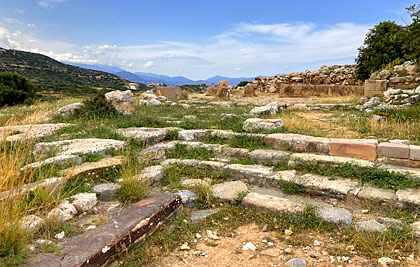

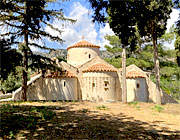
The interior of the lovely Byzantine church of Panagia Kera is literally covered with old frescoes.
Lato is a fascinating Hellenistic city with many evocative remains.
Remains of densely packed residences are mostly what is left of the Minoan town of Gournia.
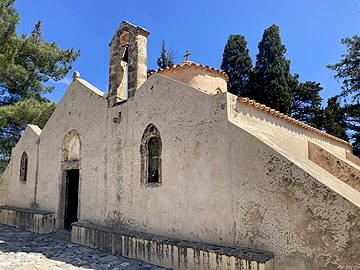
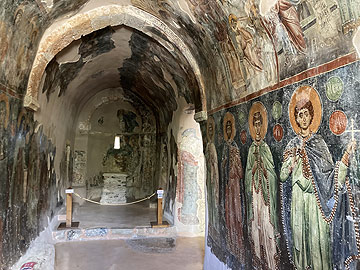
This Byzantine church standing in olive groves outside the village of Kritsa has a wonderful array of frescoes dating from the 15th to the 17th centuries.
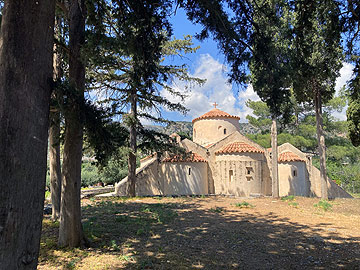
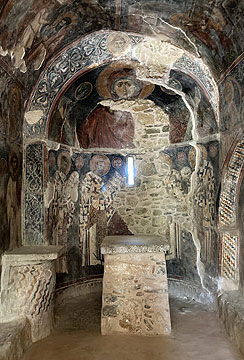
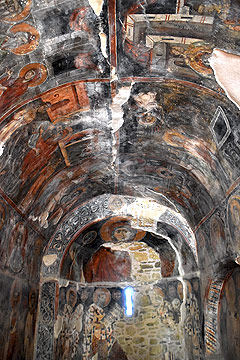
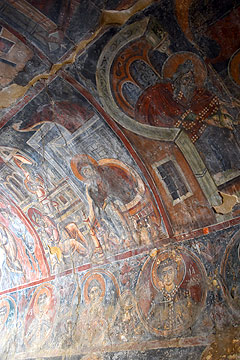
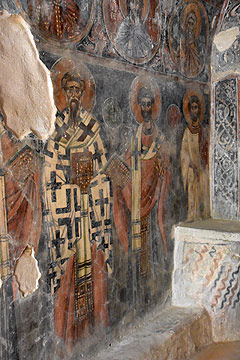
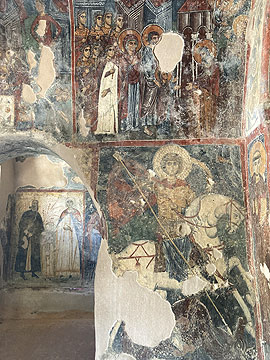
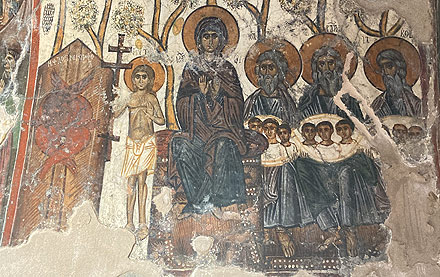
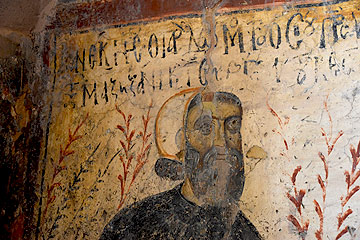
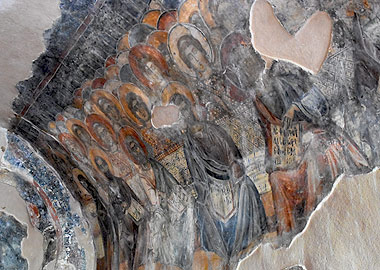
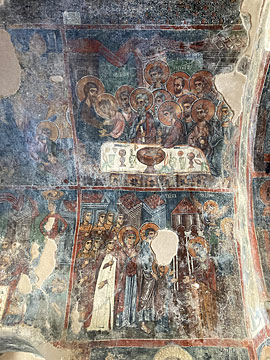
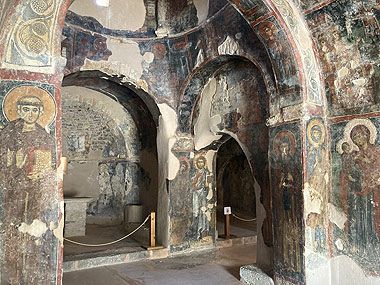
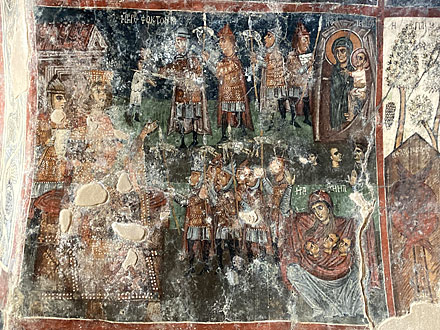
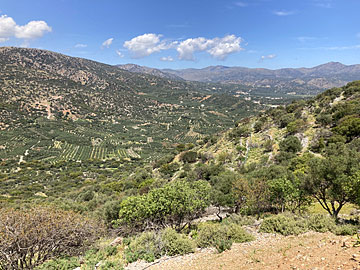
Lato and Knossos were the most interesting places we saw on Crete.
Built high up overlooking the plains and coast not far from Agios Nikolaos this ancient city has yielded artefacts demonstrating habitation as far back as the 12th century BC in Minoan times.
The remains of the buildings to be seen today date from the Classical-Hellenistic period, 4th and 3rd centuries BC.
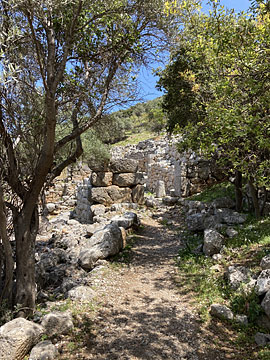
The city was surrounded by a strongly fortified wall with entrance gates. The main gate in the north west of the wall was the most impressive and this is the entrance used by visitors today.
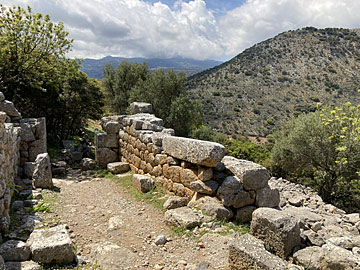
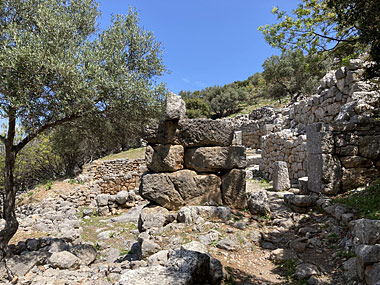
Through the main gate a short entrance passage leads to the start of the main street of the city which heads uphill at a steep incline at right angles to the passage.
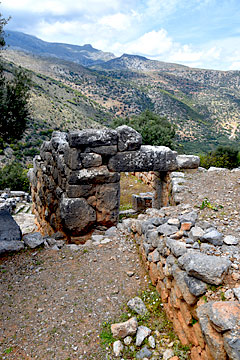
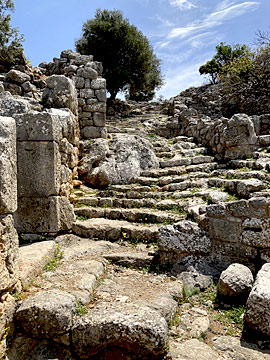
The street was lined with shops and workshops on one side and residences standing on terraces on the other, seven in all. Almost every house excavated at Lato had a rock-cut cistern for storing rain water.
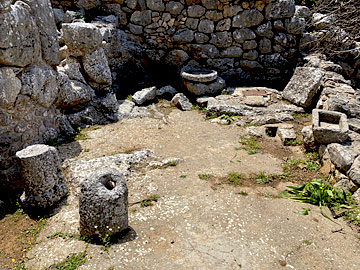
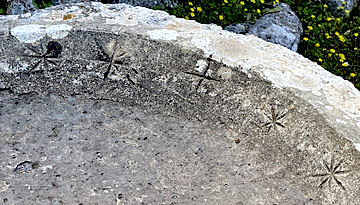
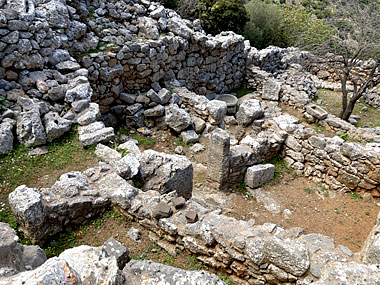
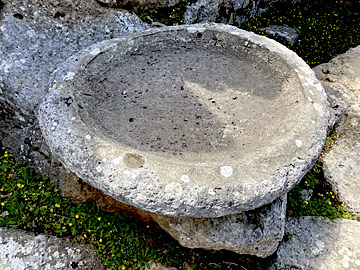
At the top of the main street is the agora, the public meeting space of the city, centred between the north and south acropolises and the east and west residential neighbourhoods.
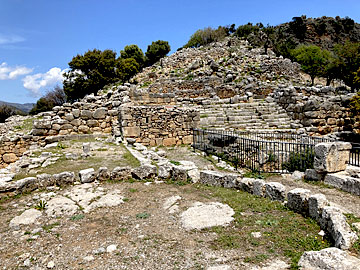
Around the agora were ranged a stoa, a covered walkway supported on columns, to the west, and an exedra, an open, seated area, on the south side. In the central space there was also a small temple and a large public water cistern.
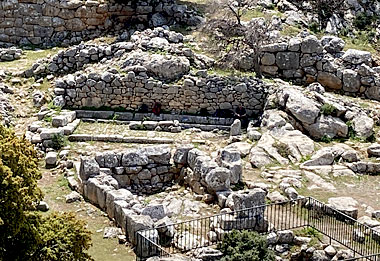
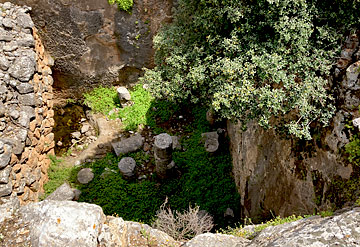
On the north side of the agora a monumental staircase, also used as a meeting place and maybe for watching spectacles or debates, leads to a prytaneion.
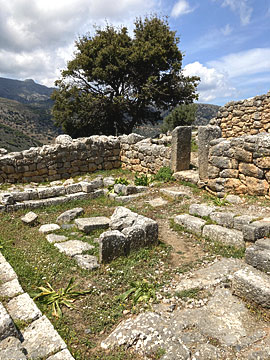
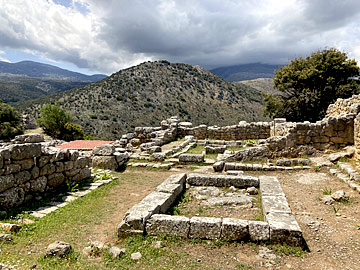
The prytaneion was a large building where the city's rulers would receive official visitors, hold meetings etc. It consisted of a peristyle courtyard on the east and a large hall with a central hearth, also serving as a dining room, on the west.
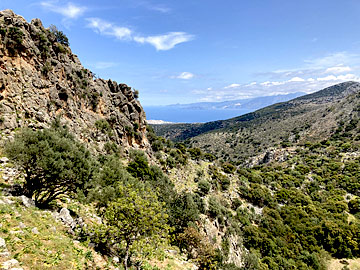
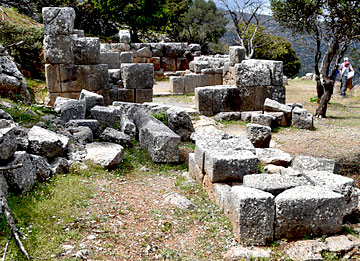
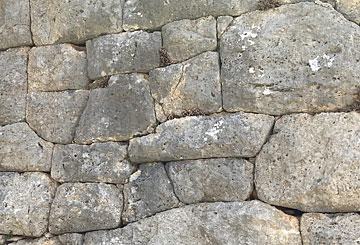
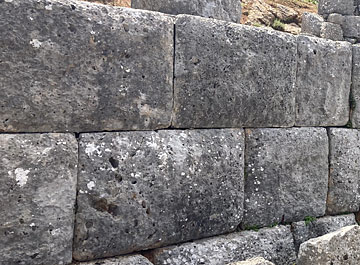
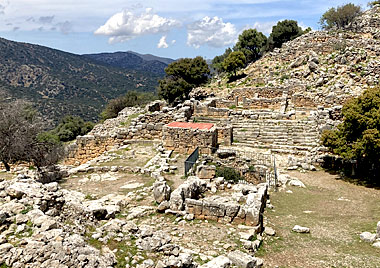
South of the agora there is a large temple, and a theatre area on the lower slopes of the south acropolis.
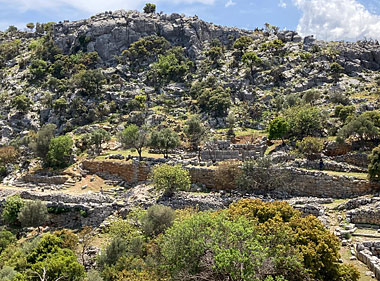
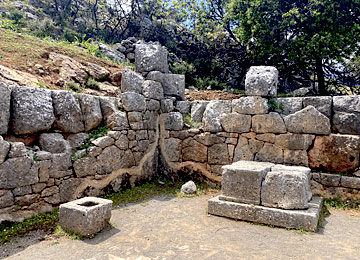
The remains of the theatre area consist of an exedra and (largely missing) rows of seats, partly cut into the bedrock and partly built. The total capacity would have been around 350. It is supposed that the audience would watch performances or events in the rectangular space to the north.
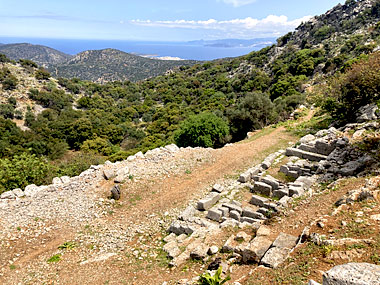
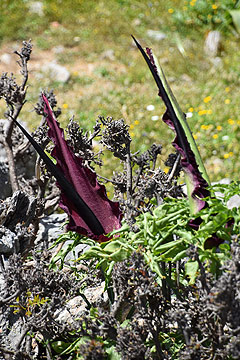
Clearly Lato was a large, important city.
It's an interesting place to visit in a lovely location with wide views inland and out to sea.
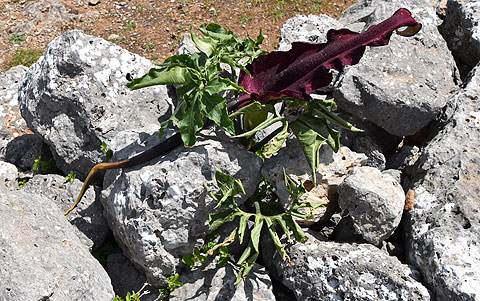
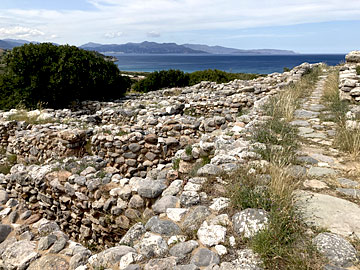
A Minoan city around 3500 years old on on a small hill to the south side of Mirabello Bay.
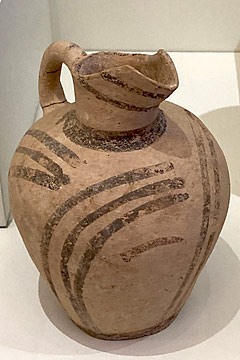
There has been a settlement of some kind here since 3000BC in Neolithic times.1 The remains to be seen today date from around 1700BC when buildings were levelled and new ones built, including, for the first time, a palace.
It is estimated that the town had a population of around 4,000 living in small houses densely packed together. Little is left of the buildings, mostly the bases of walls of the houses and minimal remains of the palace.
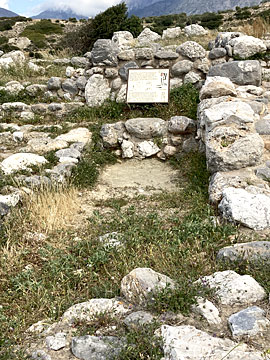
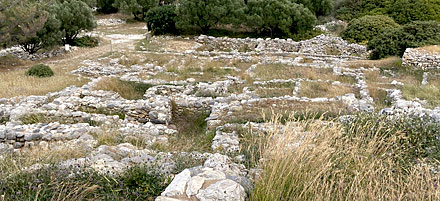
As well as a residential area, the northern part of the site had industrial activity with evidence of potteries (the remains of eleven kilns have been discovered) and bronze working (ingots, slag and moulds have been found).
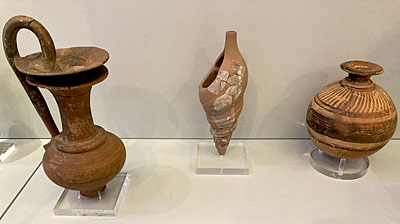
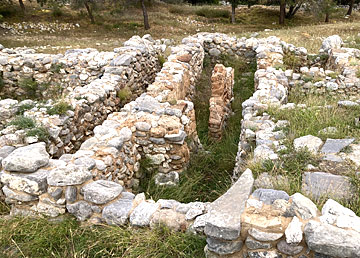
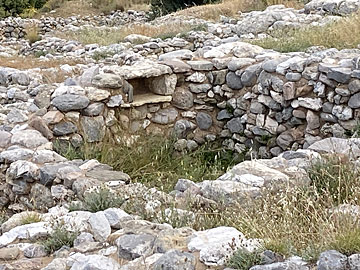
There was also a small shrine north of the palace where three statuettes of goddesses with snakes wrapped around their bodies and raised arms were found. Also an offering table, lamp stands decorated with snakes, and figurines of birds and snakes. All were found on the rear wall where there is a bench.
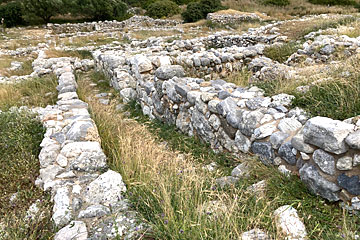
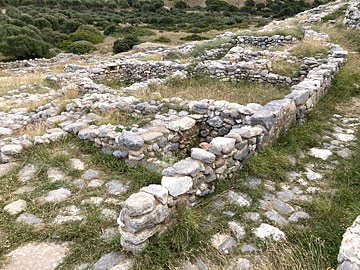
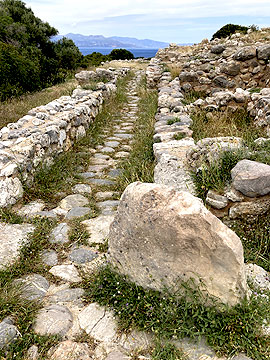
The palace, on the south side of the town, was probably the administrative centre and residence of the the town's leader. It was built on three terraces climbing the hill. The ground floor had store rooms and bathing facilities and there were residential quarters on both the ground and the next level up, where there were also workshops and an archive.
On the south side there was a public courtyard which, unusually for Minoan palaces, was outside rather than surrounded by the wings of the palace. Religious ceremonies and celebrations would have been held here, the people watching from steps.
